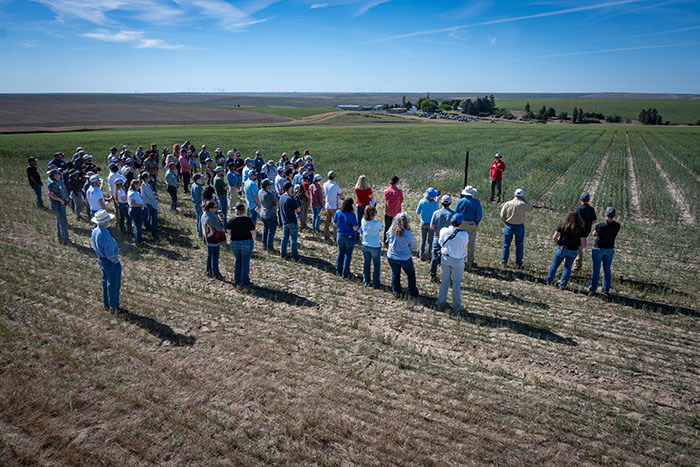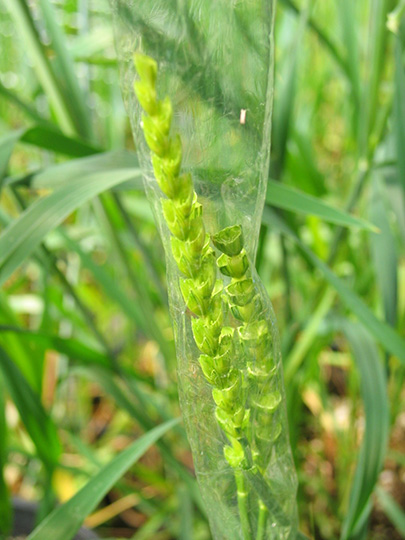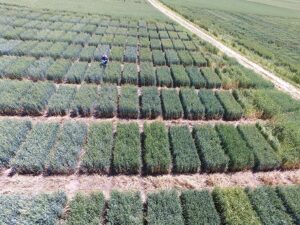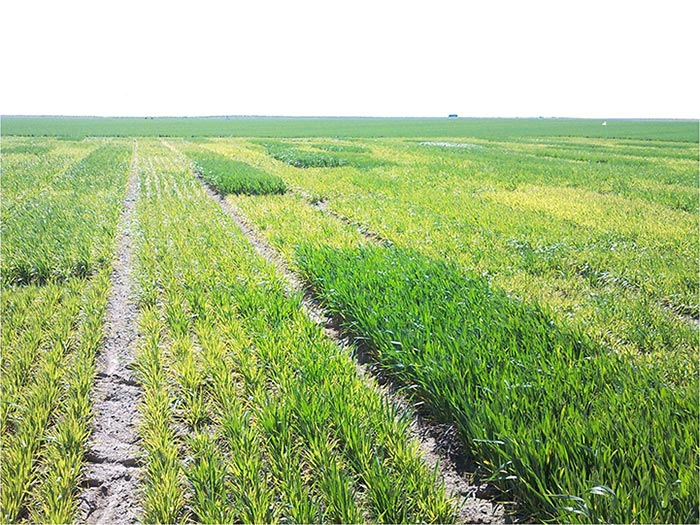Interactions with stakeholders help identify objectives followed by years of research to identify and select variations
During my 16 years as the lead winter wheat breeder at Washington State University (WSU), I have been asked many times what it takes to make a successful plant breeding program. I have thought a lot about this question, and while I am constantly refining the answer and process, I have come up with three ideas. To have a successful plant breeding program, I believe you need to: identify your objectives, create genetic variation for the traits of interest, and select that variation.


Identifying key objectives for the winter wheat breeding program requires constant interactions with stakeholders across the wheat supply chain. I get the opportunity to interact with growers often, meeting them at field tours, county grower meetings, the Tri-State Grain Growers Convention, and in one-on-one interactions (see Figure 1). During these visits, I try and discuss what traits are needed for a variety to be successful in commercial fields.
This is further expanded by visits with seed companies, the Washington Grain Commission (WGC), and export market customers. These interactions further my understanding of the needs of the wheat industry including where markets are heading.
By understanding the unique needs of all Washington wheat industry stakeholders, I shape the core objectives of my winter wheat program. In general terms, the main objectives of it are to develop high-yielding, agronomically adapted cultivars; maintain high end-use quality; and develop genetic resistance to various stress conditions in the ecosystem from other living organisms (known as biotic stresses) and nonliving components, like sunlight and temperature (known as abiotic stresses).

Once these objectives have been established, my next goal is to create variation for the objectives (see Figure 2). I will not get very far if I cross susceptible by susceptible parent cultivars together in an effort to get resistance. A lot of time and effort goes into the process of identifying cultivar parents to cross, along with the specific cross combinations that need to be made each year.
Using the above objectives as my guide, I look at the strengths and weaknesses of many different cultivars and breeding lines and start putting together lists of which lines need to be crossed together. My goal is to find lines with complimentary traits, like crossing a high-yielding, disease-resistant line with a high-yielding, high end-use quality line, in an effort to combine all three traits into one cultivar.
DNA markers further help this process, as I can identify lines with specific genes of interest and make crosses that more efficiently transfer those genes into new breeding lines (a process known as introgression). Knowing the relatedness of parental lines is also important, and DNA markers assist with that information. Crossing two parent cultivars that are highly related does not create new genetic variation, while crossing lines which are not adapted to Washington requires a lot of work to select all the favorable genes needed for success. It is a delicate balance to cross lines with genetic diversity that are also adapted to Washington. This important task is needed for any plant breeding program to be successful. Without new genetic variation, no progress can be made.

After this variation has been created, there are tens of thousands of lines to be evaluated. This is where most of a plant breeder’s time is spent (Figure 3). There are numerous traits that need to be screened at this stage in the breeding program. The first stage is usually what we call “negative selection” or removing lines from the program that do not meet expectations. They are either susceptible to diseases, do not have good quality, or do not have high grain yield.
After removing the lines that do not have potential, we turn to keeping the best lines with all the great characteristics needed for a new cultivar. This includes screening for diseases such as stripe rust, Cephalosporium stripe, eyespot foot rot, soilborne wheat mosaic virus, and snow mold, among others. Screening is also done for physiological leaf spot, tolerance to low pH soils, emergence potential from deep planting, cold tolerance, and drought tolerance, among other abiotic stresses. Along with the biotic and abiotic stresses, end-use quality is evaluated on every line to ensure it meets export standards. I work hard to get all three of these areas in line with grower and export market expectations!
Due to the large variation of rainfall zones and climates across Washington, I keep a close eye on grain yield in comparison with commercially grown cultivars. Each year, we typically screen at five to eight locations across the state to ensure high and stable performance. These traits are screened for a minimum of three years (but usually four to five years) before being entered into the WSU Variety Testing trials, where they are tested for a minimum of two years before release. This may seem like a long time, but the variability of climates requires a sufficient testing period. I want to evaluate lines in multiple environments over multiple years to ensure a line will perform well over all climates it might be grown in. Since we never know what the next season will bring when making planting decisions in the fall, I want to ensure released cultivars can maintain high yield no matter what environmental conditions come the next year!
One objective of a successful plant breeding program I do not formally have on my list, but which I often talk about, is taking advantage of opportunities in the field. Many times, I will show up to a field location not knowing what will be in store for me, only to see that a location had struggles with emergence or cold injury.
When opportunities arise that allow me to take notes on something I was not expecting, I take full advantage of them. This allows progress to be made in selection. One of those cases is shown in Figure 4. This was a field trial grown along the Oregon/Washington border. Upon inspection of the field in the spring, there was obviously something going on. After talking with plant pathologists, we found out it was soilborne wheat mosaic virus, and there was already resistance in the program! Taking advantage of this unique field location allowed rapid identification of resistant lines and sped up the process of crossing and creating new variations for this trait.
Along with hoping this three-step process helps increase understanding of plant breeding program basics, I also hope this article reveals how all wheat stakeholders are crucial to a successful program. I thoroughly enjoy talking with stakeholders to identify the objectives of the winter wheat breeding program and learning about the future needs in Washington. Then, like a puzzle, I put together different cross combinations that aim to create variation for these traits.
Ultimately, many years are spent evaluating the lines, with many hours each summer spent in the field looking at lines, collecting data, and analyzing differences between each line to find the best of the best. Every year, there are unique circumstances that allow new opportunities for evaluation, all ultimately leading to developing and releasing superior cultivars for the growers in Washington.
While I never know what will come the following year, I am always ready with the tools and technology needed to make the best evaluations of breeding lines and advance the best lines for commercial release for Washington farmers.
This article originally appeared in the July 2025 issue of Wheat Life Magazine.

Arron Carter
Winter Wheat Breeder and O.A. Vogel Endowed Chair of Wheat Breeding and Genetics, Washington State University
